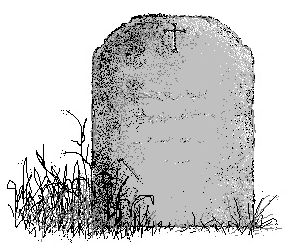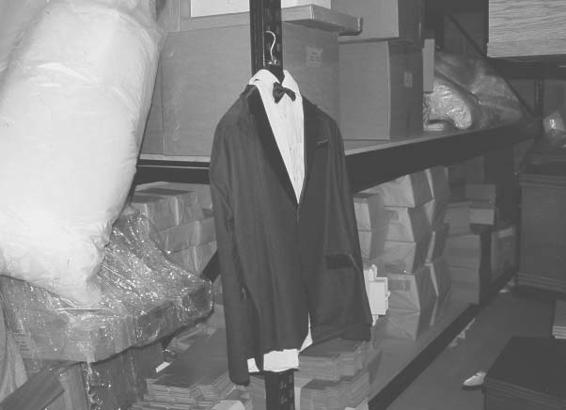Reading Six Feet Under: TV to Die For (2 page)
Read Reading Six Feet Under: TV to Die For Online
Authors: Kim Akass,Janet McCabe
Tags: #Non-Fiction

MARK LAWSON is a journalist, broadcaster and author. He presents BBC Radio 4’s arts magazine
Front Row
. He has been a freelance x
CONTRIBU TORS
contributor to numerous publications since 1984 and a
Guardian
columnist since 1995. In the mid-nineties he presented
The Late
Show
on BBC 2, and he has presented
The Late Review
since 1994.
He has twice been voted TV Critic of the Year and has won numerous awards for arts journalism.
THOMAS LYNCH is an essayist, poet and funeral director. He is the author of three collections of poetry:
Skating with Heather Grace
(Knopf, 1987);
Grimalkin & Other Poems
(Jonathan Cape, 1994); and
Still Life in Milford
(W.W. Norton, 1998). His first collection of essays,
The Undertaking – Life Studies from the Dismal Trade
(Norton, 1997), won the Heartland Prize for non-fiction, The Society of Midland Authors Award and the American Book Award, and was a finalist for the National Book Award. It is translated into eight languages. His second book of essays,
Bodies in Motion and at Rest
(W.W. Norton, 2000), won the Great Lakes Book Award. A third book of non-fiction,
Booking Passage – We Irish & Americans,
will be published in 2005. In 2001 Thomas Lynch was named Michigan Author of the Year by the Michigan Library Association and was awarded an Honorary Doctor of Humanities by Oakland University.
He is the recipient of fellowships from the National Endowment for the Arts, the Michigan Council for the Arts and the Irish Arts Council. He is a regular contributor to radio on the BBC, RTE and NPR. His BBC Radio 4 series,
Colloquies
, won the Sony Gold Award in 2001. He has appeared on
The Today Show
, CNN, the PBS-Bill Moyers series,
On Our Own Terms
and
Religion & Ethics Newsweekly
.
His work has appeared in
Poetry, Harper’s, Esquire, The New Yorker,
The Paris Review, Time, Newsweek, The Christian Century, The U.S.
Catholic, The New York Times, The Los Angeles Times, The Times of
London
and
The Irish Times
. Thomas Lynch has read and lectured throughout Europe, North America, Australia and New Zealand.
Described by
The New York Times
as ‘a cross between Garrison Keillor and William Butler Yeats’, he is a regular presenter to health care, hospice, medical ethics, clergy, funeral service, academic and literary conferences, and is an adjunct professor with the Graduate Department of English at the University of Michigan, Ann Arbor. He lives in Milford, Michigan, where – since 1974 – he has been the funeral director, and in West Clare, Ireland, where he keeps an ancestral cottage.
xi
READING
SIX FEET UNDER
ERIN MacLEOD is a Ph.D. student in communications at McGill University. She is also an instructor in the English Department at Vanier College, Montreal, Quebec, teaching courses in West Indian, Canadian and cyberpunk literature. Combining an expansive knowledge of popular culture with an interest in issues of identity formation, her scholarship has investigated a wide range of subjects
– from Jamaican music to television and cyberfeminism.
JANET McCABE is a Research Associate at Manchester Metropolitan University. She has written several essays on American TV drama on British television, narrative form and gender, as well as co-authoring essays with Kim Akass on female narratives and narration in American TV drama. She is author of
Feminist Film Studies: Writing
the Woman into Cinema
(Wallflower Press, 2004), and has co-edited (with Akass) and contributed to
Reading Sex and the City
(I.B.Tauris, 2004). She is currently researching a book on female narrative in contemporary American TV drama. She is a member of the editorial board for
Critical Studies in Television.
MANDY MERCK is Professor of Media Arts at Royal Holloway, University of London. Her recent books include
In Your Face: Nine
Sexual Studies
(New York University Press, 2000) and
The Art of
Tracey Emin
(Thames and Hudson, 2002). Her current research is on ideas of ‘American-ness’ in US film.
LUCIA RAHILLY has done graduate work in film, TV and literature, and holds an MA from the Cinema Studies Department at New York University. Her other TV-related publications include ‘Through a Glass, Malarkey’ in
Reading Sex and the City
(I. B. Tauris, 2004) and
‘WWF Wrestling as Popular Sadomasochism’ in
Steel Chair to the
Head
(Duke, 2005). She lives in New York City.
ASHLEY SAYEAU (formerly Nelson) received her MA in liberal studies in 2002 from the New School for Social Research, where she completed a thesis on single women and
Sex and the City
. She has written extensively on women, politics and popular culture for a variety of American publications, including
The Nation, Salon, Dissent
and
The Philadelphia Inquirer
. She has also contributed to
Reading Sex
and the City
(I. B. Tauris, 2004) and
The W Effect: Bush’s War on
xii
CONTRIBU TORS
Women
, edited by Laura Flanders (Consortium, 2004). Visit her website at: www.ashleysayeau.com.
BRIAN SINGLETON is Head of the School of Drama at Trinity College, Dublin. For the past three years he has been editor of
Theatre Research International
(Cambridge University Press), and he is currently the Vice-President for Publications of the International Federation for Theatre Research as well as series editor of
Studies in
International Performance,
published by Palgrave. He has published two books on the life and work of Antonin Artaud and edited two journal collections on Irish theatre, and his most recent monograph is entitled
Oscar Asche, Orientalism and British Musical Comedy
(Praeger, 2004).
ROBERT DEAM TOBIN is a Professor of German at Whitman College in Washington State, where he also teaches courses in film and gender studies. Besides his two books,
Warm Brothers: Queer Theory
and the Age of Goethe
(University of Pennsylvania Press, 2000) and
Doctor’s Orders: Goethe and Enlightenment Thought
(Bucknell University Press, 2001), he has published essays on masochism, German film and the series
Queer as Folk
. He is completing a book on the emergence of modern discourses of sexuality in Germany.
ROB TURNOCK is a lecturer in media theory at Bournemouth University. He is currently completing a book on British television and culture in the 1950s and 1960s, which is to be published by I. B. Tauris in 2005, and is co-editing a book on the history of ITV.
He is also author of
Interpreting Diana: Television Audiences and the
Death of a Princess
(BFI Publishing, 2000).
PETER WILSON is a principal lecturer in English and creative writing at London Metropolitan University. His main teaching and research interests are in modernist poetry, stylistics and creative writing. These are reflected in his publications, such as
A Preface to Ezra Pound
(Longman, 1997) and
Mind the Gap: Ellipsis and Stylistic Variation
in Spoken and Written English
(Pearson Education, 2000). Peter is a practising poet whose main focus is collaborative work with artists and musicians, such as his poems for the CD-ROM,
Poems, Pictures,
Music
(Ultralab, 1997).
xiii
REGULAR CAST LIST
Olivier Castro Stahl
Peter Macdissi
Keith Charles
Mathew St Patrick
Bernard Chenowith
Robert Foxsworth
Billy Chenowith
Jeremy Sisto
Brenda Chenowith
Rachel Griffiths
Margaret Chenowith
Joanna Cassidy
Russell Corwin
Ben Foster
Federico ‘Rico’ Diaz
Freddy Rodriguez
Vanessa Diaz
Justina Machado
Claire Fisher
Lauren Ambrose
David Fisher
Michael C. Hall
Lisa (née Kimmel) Fisher
Lili Taylor
Nathaniel ‘Nate’ Fisher, Jr
Peter Krause
Nathaniel Fisher, Sr
Richard Jenkins
Ruth (née O’Connor) Fisher (now Sibley)
Frances Conroy
Arthur Martin
Rainn Wilson
George Sibley
James Cromwell
xv

foreword
Reading
Six Feet Under
MARK
LAWSON
In a time when American confessional talk shows have featured almost every possible form of sexual behaviour – and paedophiles have been interviewed on peak-time documentaries in Britain –
it’s tempting to conclude that television no longer has any taboos.
Yet, well into the twenty-first century, one everyday human activity remains a subject of extreme sensitivity for television: death.
Speaking to guests about the death of relatives, interviewers routinely use euphemisms such as ‘loss’ and ‘passing away’. On 24-hour news channels, coverage of wars and catastrophes (Oklahoma, 9/11, Iraq) anchors frequently prefer to refer to ‘casualties’ or people being
‘beyond help’.
It’s true that two of the most popular dramatic genres at the turn of the millennium – series featuring detectives or pathologists
– were predicated on death and usually involved a couple of cold bodies early in the plot. But even in shows based around the morgue
–
Silent Witness
in the UK,
Diagnosis Murder
in the US – the corpses were incidental characters and bereavement was somehow redeemed by the solution to the murder. Death in such programmes was deliberate, rare and more or less conquered by the optimism of finding someone to blame in the final frame.
So the central distinction of
Six Feet Under
, produced by HBO
(Home Box Office Entertainment) is to have created the first xvii

READING
SIX FEET UNDER
television drama to be underpinned at every moment by the pointlessness, indignity and finality of death.
SFU
– the abbreviation nicely encapsulating its attitude towards social and television conventions – can now be seen as one of a number of circa-2000 series which marked a new darkening of tone, deepening of subject matter or complexity of structure in American television. The others are:
The Sopranos, The West Wing, Sex and the
City, 24
and
Nip/Tuck
.
Though, as the essays here stress, much of the credit for the toughening of American television must go to HBO (producer of
The
Sopranos, Sex and the City
and
Six Feet Under
), which saw that cable television had created a space in the medium for adult imagination, this opening of the box has also spread to networks such as NBC
and Fox.
Each of the shows cited above was significantly innovative.
The
Sopranos, The West Wing
and
Sex and the City
offered dialogue of a kind never previously heard on TV in terms respectively, of cynical profanity, political complexity and sexual explicitness. And
24
was unprecedented in its games with the shape and timing of television: the commercial hour, the week’s wait for the next instalment.
Even so, the plots and content of Keifer Sutherland’s race against time were familiar from a hundred movie thrillers, and
The
© the authors
xviii
READING
SIX FEET UNDER
Sopranos, The West Wing
and
Sex and the City
all have clear ante-cedents in cinema. Aaron Sorkin had first explored the presidency in Rob Reiner’s
The American President
, the White House sets of which were recycled for the television series.
The Sopranos
has a declared overlap with
The Godfather
and a more subliminal one with
Analyse This
, while
Sex and the City
, if made as a movie, would join a crowded shelf of spiky, sexy New York dating films from
Looking
For Mr Goodbar
to
Kissing Jessica Stein
.
